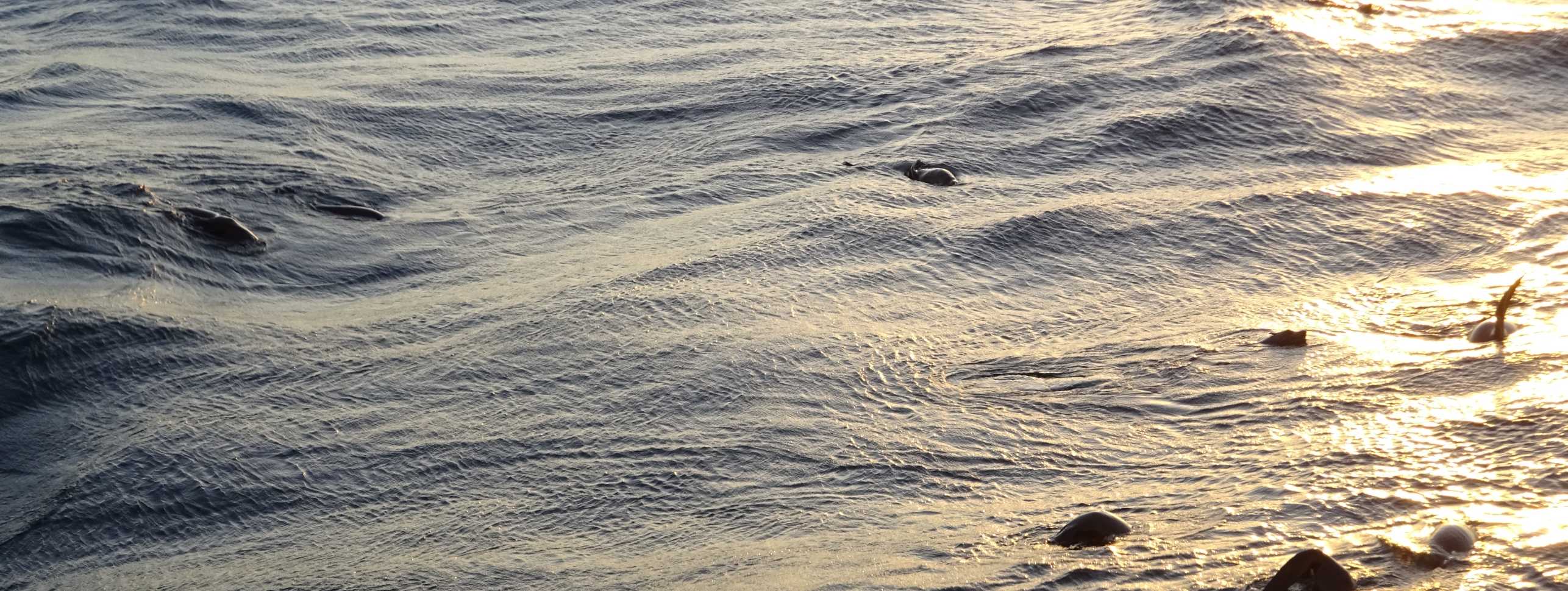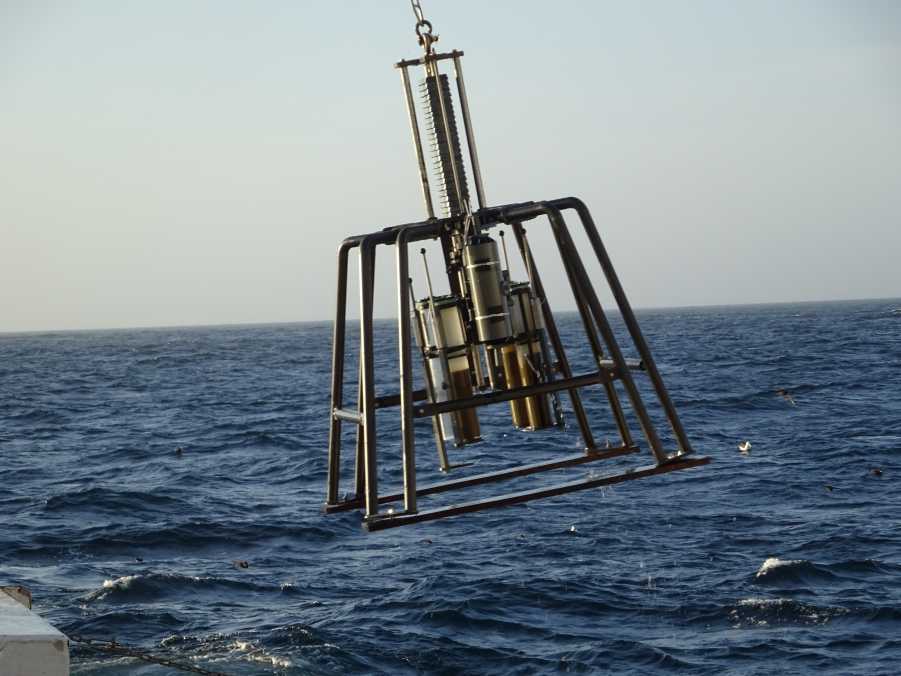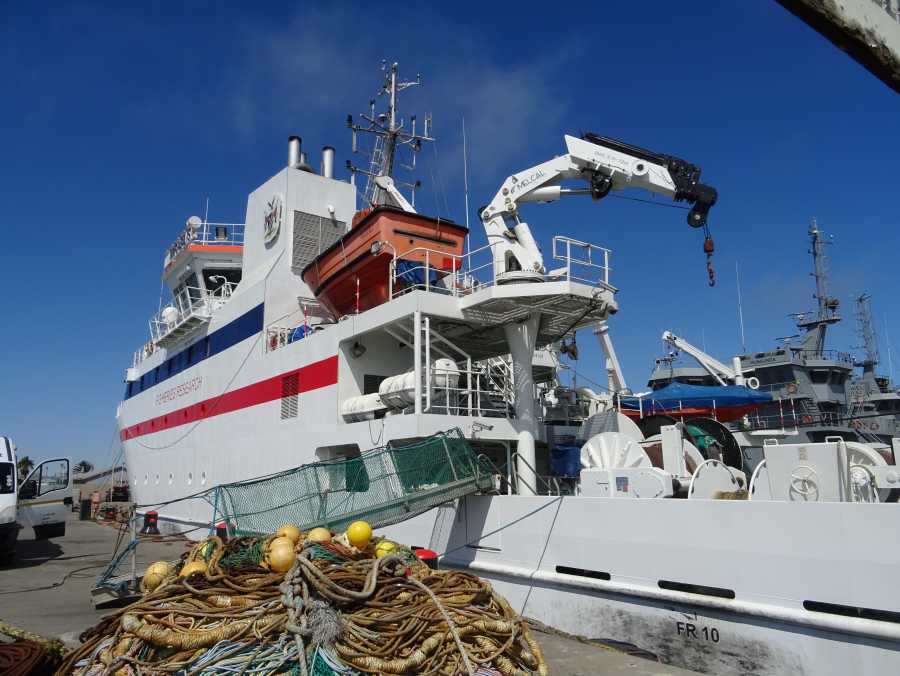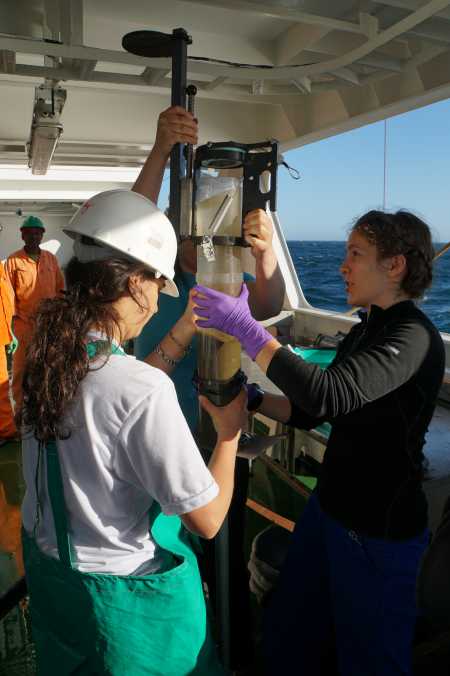SLOB
The SLoppy Ocean Bottom Hypothesis (SLOB)

Lead
Marine sediments represent a major global sink of organic carbon (OC), and as such exert a key control on atmospheric oxygen (O2) and carbon dioxide (CO2) concentrations, and Earth’s climate. Today, OC burial in marine sediments mainly takes place under oxygen-rich water columns, where most OC is closely associated with sediment grains and biogenic minerals. In prior episodes of Earth’s past, when large parts of the oceans were anoxic, the mode of sedimentary OC burial may have been very different, however. Present-day analogues indicate that most OC in surface sediments under anoxic water columns occurs in large (100-2,000 μm diameter) organic and organo-mineral aggregates which, due to their low density, are prone to wave- and current-induced resuspension. Upon mobilization they can undergo lateral transport within so-called nepheloid layers over hundreds of kilometers, and on timescales of thousands of years. Little is known about processes of resuspension and formation of these aggregates, or which factors control their eventual breakdown or burial.
Objectives
The goal of this project is to better understand OC cycling in these modern, anoxic, “Semi-Liquid Ocean Bottom” (SLOB) areas. We will study a natural gradient spanning from anoxic sediments and bottom water on the Namibian shelf (Benguela Upwelling System) to an OC 'depocenter' on the upper slope overlain by oxic bottom water, focusing on remobilization processes and potential changes to OC during lateral transfer. Using surface sediment and bottom water samples from this gradient, we will characterize three different components, i.e. mineral-free organic fragments, organo-mineral aggregates and mineral-hosted organic matter, with respect to OC reactivity, OC age, microbial community structure and hydrodynamic properties. We also will perform sediment resuspension experiments and laboratory incubations on samples from selected locations with anoxic, hypoxic, and oxic bottom water. These experiments will be used to determine erosion thresholds and the impact of redox conditions on aggregate formation, aggregate breakdown, OC reactivity, and microbial community structure over time. Results will be compared to natural distributions of sedimentary OC fractions in bottom water and surface sediments in order to constrain the dynamics of lateral OC transport across the Namibian margin, and to inform on past intervals in Earth history that may have experienced SLOB conditions.
Scientific and social context of the research project
This multi-dimensional project uses a geobiochemical, sedimentological and microbiological approach to gain new and exciting insights into the impact of anoxia on OC distribution on the seafloor and microbial community adaptation in the sediment-water interface. If the experiments show that the threshold of initial motion differs significantly between oxygenated and suboxic sediment it has profound consequences on our understanding of sediment-associated OM transport and preservation in past and future intervals of ocean anoxia. Although the focus lies on modern processes in the BUS, the outcome of this project will be of relevance to other oxygen-deficient systems of the past, present and future. This not only concerns ocean settings but also lakes, where anoxic bottom waters and nepheloid layers are recognized features (Blees et al., 2014). The project also carries relevance for potential changes in sediment carbon stocks (Avelar, van der Voort and Eglinton, 2017), and within the BUS, fisheries which are a crucial component of the Namibian economy. Looking ahead to further ocean warming, the processes we seek to investigate gain in significance as OMZ expand, impacting the biogeochemistry and ecology of the seafloor.
Project member
- Elena Bruni


